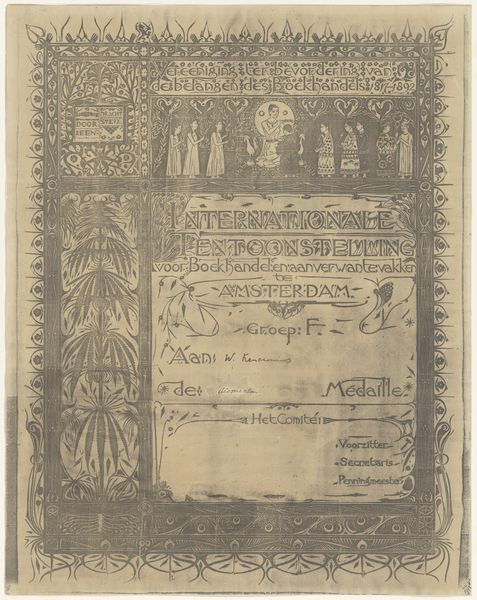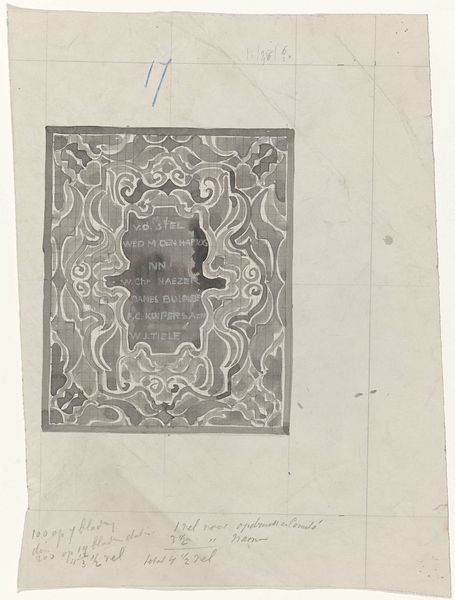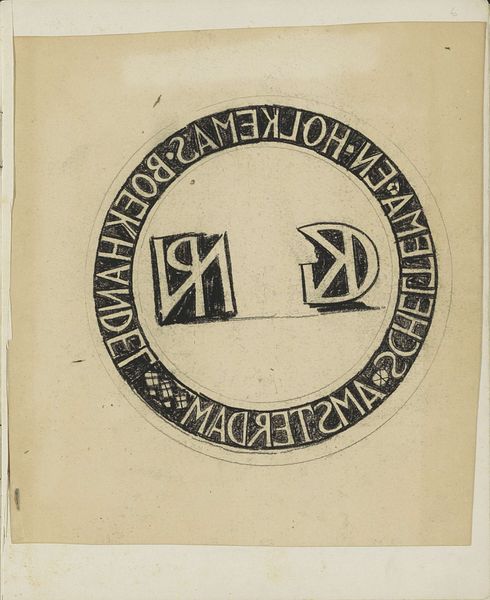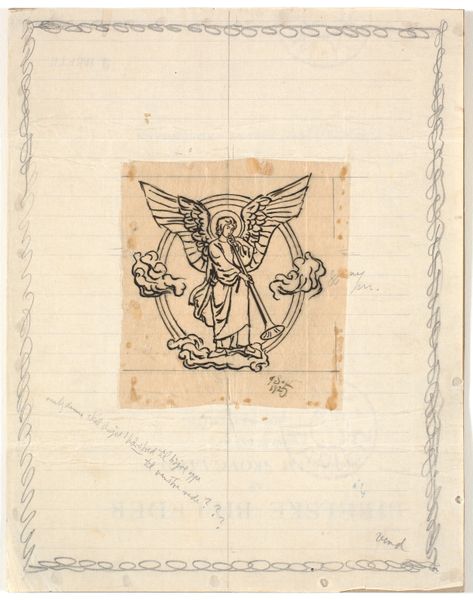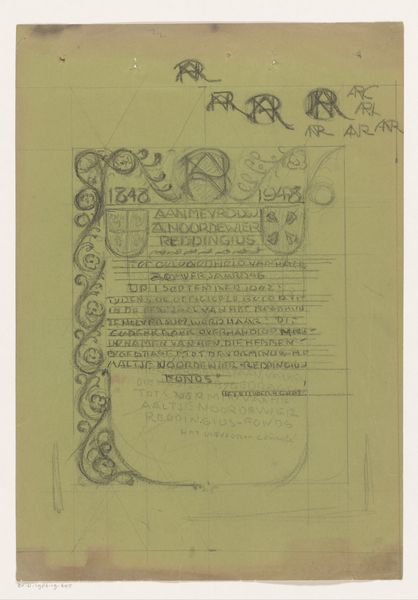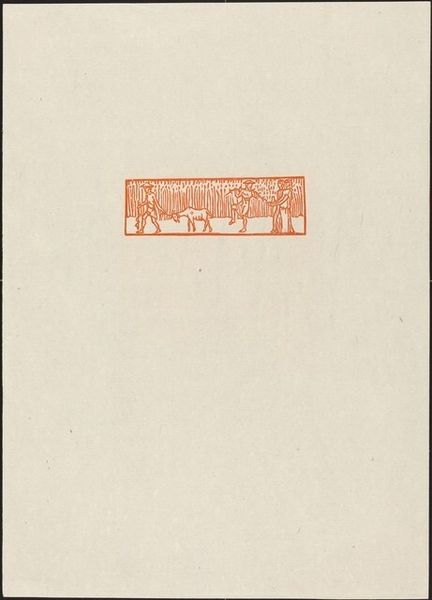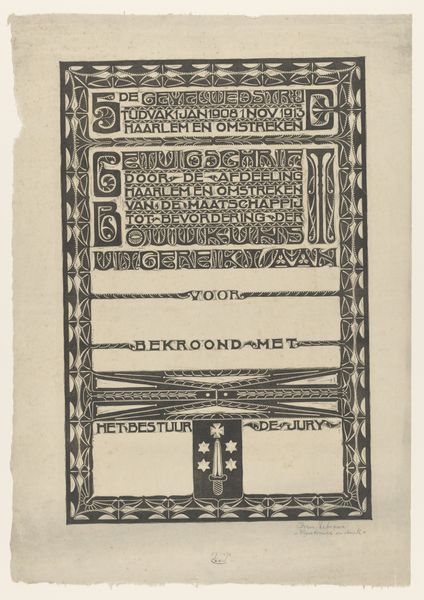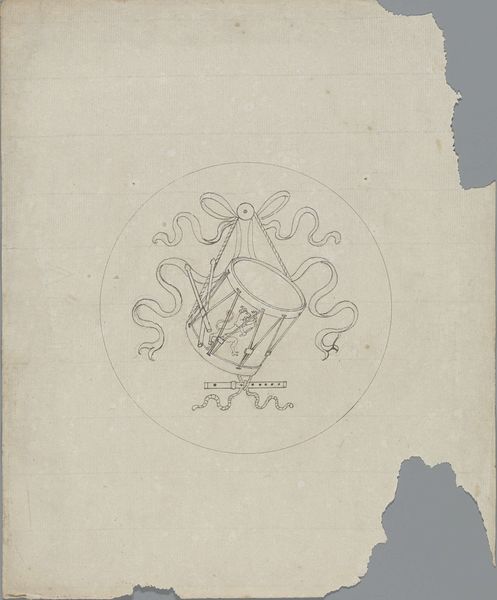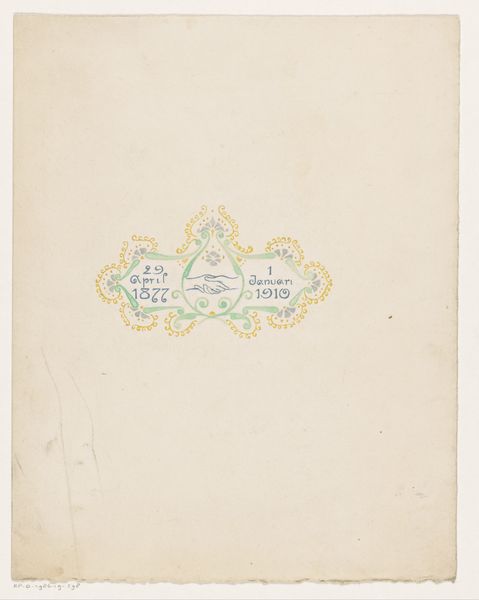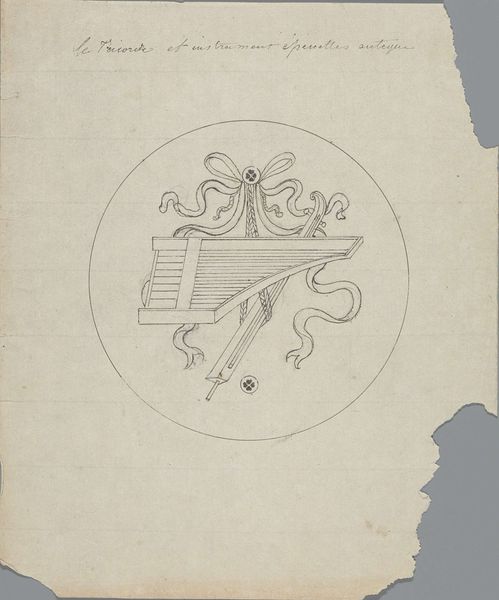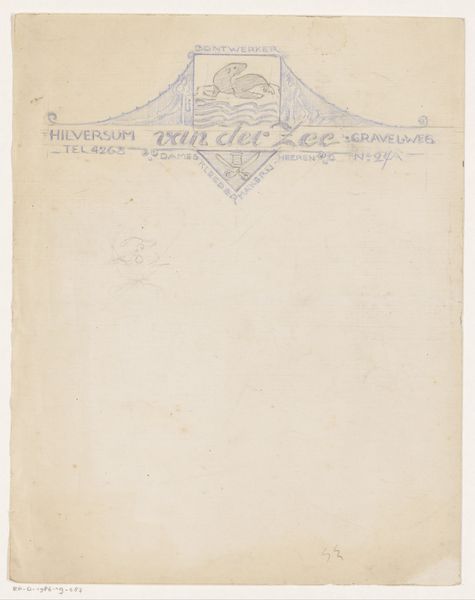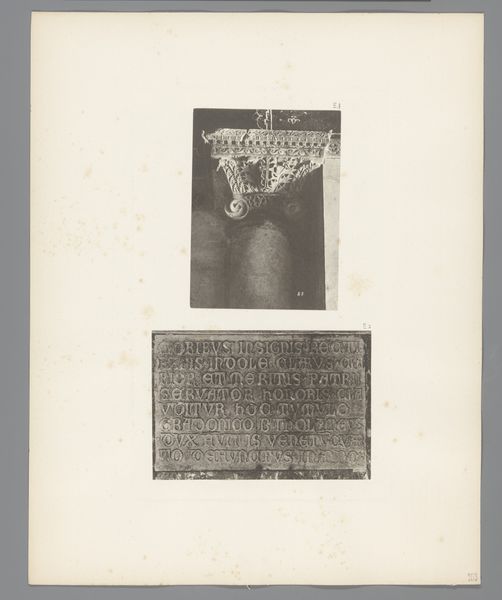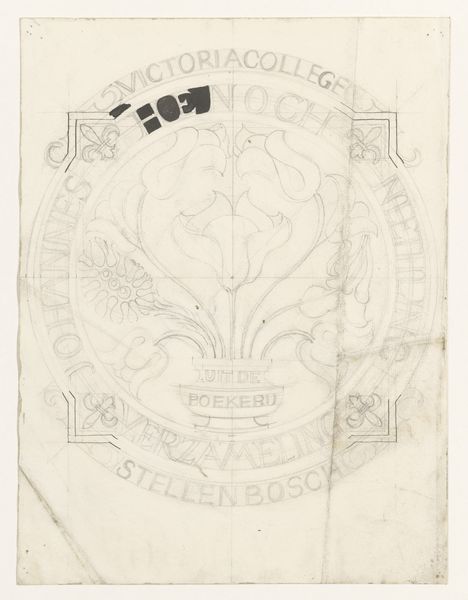
drawing, graphic-art, paper, typography, ink, poster
#
drawing
#
graphic-art
#
art-nouveau
#
paper
#
typography
#
ink
#
poster
Dimensions: height 326 mm, width 250 mm
Copyright: Rijks Museum: Open Domain
Editor: Here we have Carel Adolph Lion Cachet’s "Ontwerp voor boekband van Onder Neerlands Vlag," dating from 1874 to 1945. It's a striking design, made with ink on paper, quite bold for a book cover. The typography and the ornamentation seem very intertwined. What's your take on it? Curator: Well, looking at it materially, this drawing transcends simple illustration. Consider the *labor* involved. The meticulous ink work speaks volumes about the bookmaking processes of the late 19th and early 20th centuries. What sort of implications would arise when transitioning to new, industrial manufacturing processes? Editor: I hadn't considered the process so deeply, just the aesthetic. You're saying the handmade aspect connects it to the labor force of the time? Curator: Exactly. And this isn’t just any labor, but skilled labor. It raises questions about artistic value – where do we draw the line between craft and fine art when such skill and care are involved? Especially since this would likely be transferred to mass production. Editor: So, by focusing on the materials and production, we can see how the artwork challenges traditional hierarchies? Curator: Precisely. And consider the “Nederlandsche Militairen Bond”, they probably had something in mind when requesting this aesthetic to represent them, no? This piece pushes us to confront the realities of production, skill, and social context. What purpose would ornamentation of this level serve in this piece's social context? Editor: It's a fascinating perspective. I’ll definitely look at book covers differently from now on. Thanks! Curator: My pleasure. Now think of this visual vocabulary applied today - how might the materials or production be different, and what commentary would it create?
Comments
No comments
Be the first to comment and join the conversation on the ultimate creative platform.
